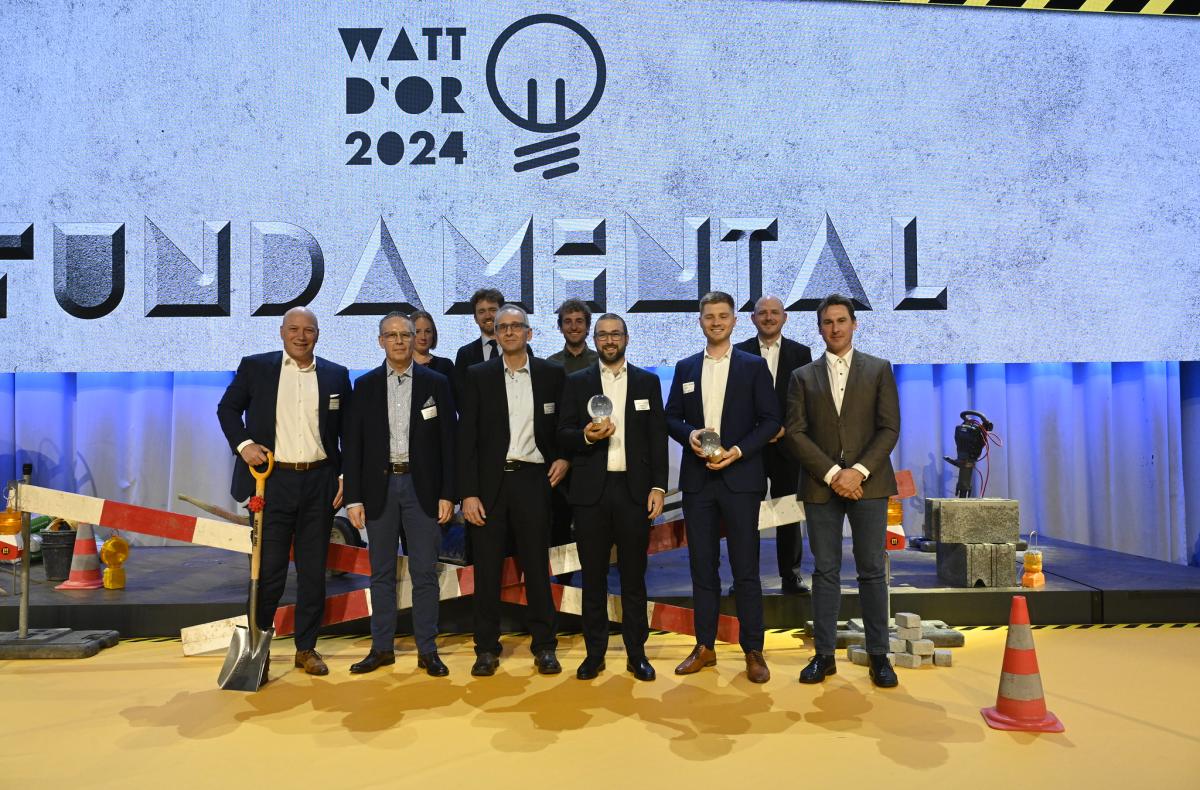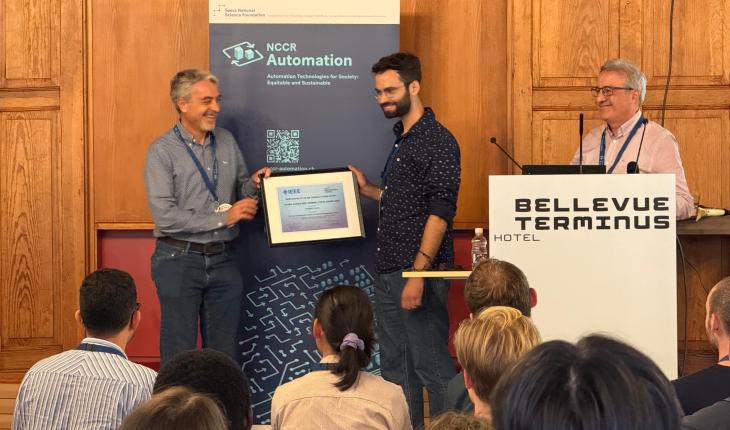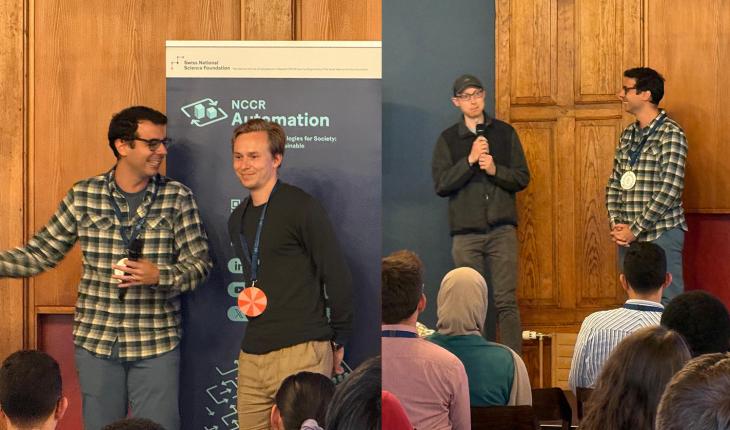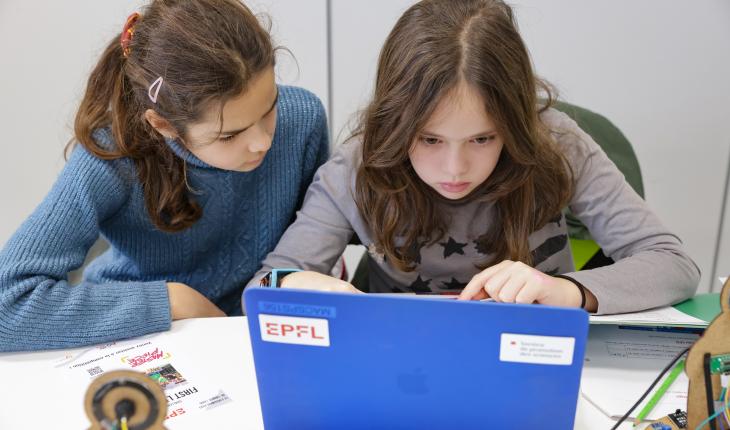NCCR Automation team win Watt d’Or for efficient and sustainable power supply with photovoltaics

For the seventeenth time, the Swiss Federal Office of Energy has awarded Switzerland’s Watt d’Or energy prize – and ETH Zurich is one of the winners. ETH received the award in the Energy Technologies category in collaboration with AEW Energie AG. The Watt d’Or has been honouring pioneering projects and achievements in the energy sector since 2007.
ETH researchers Lukas Ortmann and Saverio Bolognani from the group led by Florian Dörfler, Professor at the ETH Automatic Control Laboratory, have been awarded the Watt d’Or for developing an algorithm, together with associated online feedback optimisation software, that can be used to solve an optimisation problem in the electricity grid. Specifically, they implemented their algorithm in the real-world environment of the AEW Energie electricity grid in a way that meant photovoltaic systems not only supply renewable electricity, but at the same time help to optimise reactive power.
Optimised, faultless grid operation thanks to real-time data
The ETH researchers’ collaboration with AEW Energie came about through the National Centre of Competence in Research “Dependable, ubiquitous automation” (NCCR Automation). Ortmann, now Professor of Control Engineering at the Eastern Switzerland University of Applied Sciences in Rapperswil, reports that they conducted a pilot project to test their optimisation software on an AEW Energie solar plant. Real-time information from the software is used to control the plant’s reactive power output in an attempt to conform as closely as possible to the reactive power in the grid, for instance to quickly reduce excessively high voltages.
Reactive power is a flow of electrical energy that consumers don’t use. In an alternating-current grid, it can be used to manage the voltage. The electricity grid requires reactive power for safe operation. Inverters convert direct current from a generator such as a photovoltaic system into alternating current for the grid. Thanks to the ETH software, the inverters now produce voltage-reducing or voltage-increasing reactive power, which is used to optimise the reactive power available in the grid.
What makes the ETH algorithm innovative and useful is that it is based on real-time data from the AEW electricity grid, so it can adjust the reactive power to the prevailing situation in a way that optimises the local flow of reactive power. The algorithm learns from real-time readings of voltage and reactive power how to guide the grid into its optimum operating state.
Having already demonstrated in the lab that their control concept works in theory and in simulations, the ETH researchers have now shown together with AEW Energie that the algorithm is also robust under real-world conditions. During the test phase at AEW, its electricity grid management was faultless. The algorithm is now in continuous operation.
Stable electricity supply with renewables
The results of the pilot project at the AEW solar plant are very promising: “In principle, using the example of a single, existing AEW solar plant, we’ve shown that our optimisation software can contribute to grid stability in Switzerland,” Ortmann says.
Not only can the algorithm and the software be applied to solar plants, but they are also suitable for all power plants that work with an inverter to generate reactive power. Inverters are found in photovoltaic systems as well as in modern hydropower plants, wind turbines, charging stations for electric cars, and heat pumps.
If the optimisation software ran on all systems, this could increase grid capacity – in other words, the amount of electricity that can be supplied through the grid – by around 10 percent with no need for AEW, as the grid operator, to build any additional infrastructure. Over the next few years, dealing with the proliferation of photovoltaic systems will be a challenge for Swiss grid operators. If their grids are to transport this growing amount of electricity, they will have to be expanded at high cost. But if they use the optimisation algorithm and the software, they can reduce their investment costs in the short to medium term – while at the same time contributing to grid stability and thus to the security of electricity supply as solar energy is expanded in the years ahead.
This is a crucial concern for Switzerland, with the electricity grid infrastructure requiring particular attention given how critical it is for the nation’s energy supply – something that hospitals and data centres, for instance, absolutely cannot do without. Accordingly, the researchers and AEW also focused their attention on ensuring that the optimisation software is guaranteed to function reliably and faultlessly.
From theoretical research to practical benefits
Furthermore, the pilot project has shown that the software is technically, operationally and financially advantageous to regional electricity suppliers that operate a low-voltage distribution grid. For one thing, they can optimise their grid operations – without costly expansions of their infrastructure – to ensure that the electricity reliably reaches household sockets. Optimising reactive power flows also has an impact on local voltage ratios, and last but not least, more cost-effective grid management can also have a positive impact on customer tariffs for using the grid.
The key to success was that in AEW Energie, the ETH researchers had found themselves a partner that was willing to try their algorithm out. Ortmann says of the project: “AEW Energie recognised that the energy transition calls for different approaches and solutions, and it had the courage to try something new.”
Describing the project from AEW Energie’s perspective, Alessandro Scozzafava, Team Leader Grid Development and Maintenance Planning at AEW, says: “This collaboration with ETH Zurich has enabled us to come one step closer to our goal of making energy supply even more sustainable and efficient. By working together on the reactive power control pilot project, we were able to test an innovative technology and solution in a real-life environment that will help us use energy more efficiently while reducing our environmental impact.”
Text: Mira Wecker, ETH Zurich






